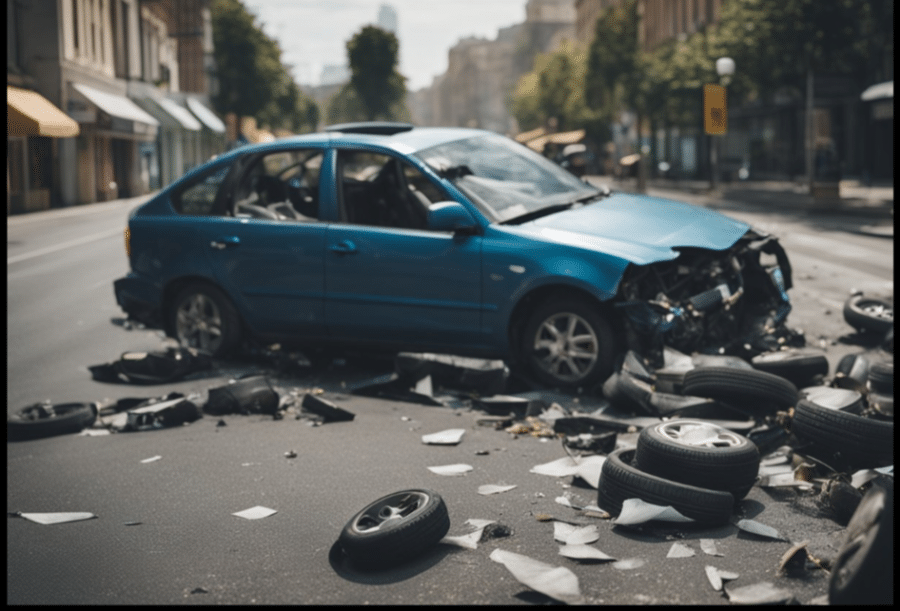Vehicle collisions can result in a range of injuries, varying from minor bruises to severe trauma. However, certain types of injuries are more common in the event of a crash. Understanding these frequent injuries is crucial for both medical professionals and drivers, as it enables better preparedness in emergency situations and informs safety measures within vehicles.
Whiplash stands out as the most common injury associated with vehicle collisions, particularly in rear-end accidents. This injury occurs due to the sudden and forceful back-and-forth movement of the neck, which can damage the neck's muscles, ligaments, and vertebrae. It is commonly associated with a variety of symptoms, including neck pain and stiffness, which may not be immediately apparent after the accident.
Aside from whiplash, other prevalent injuries include concussions, fractures, and contusions. These injuries often result from the high-impact forces typically experienced during vehicle collisions, highlighting the importance of vehicular safety features such as seat belts and airbags. By understanding the common injuries, individuals can take proactive steps to mitigate risks and address the aftermath of vehicle collisions more effectively.
Types of Vehicle Collision Injuries
Vehicle collisions frequently result in a variety of injuries, which can range from mild to severe. Identifying the types of injuries sustained is crucial for medical professionals and a vehicle collision lawyer who build personal injury claims for affected individuals.
Whiplash and Neck Injuries
Whiplash is a common result of rear-end vehicle collisions. The forceful, rapid back-and-forth movement of the neck can lead to:
- Stiffness and pain in the neck
- Reduced range of motion
- Possible chronic issues if not treated promptly
Head Injuries and Concussions
Head injuries, including traumatic brain injuries (TBIs) and concussions, can occur when the head strikes an object like the steering wheel or window. They may present symptoms such as:
- Confusion or disorientation
- Persistent headaches
- Memory problems
Broken Bones
The impact of a collision often causes fractures, particularly in the:
- Arms and wrists
- Legs
- Ribs
Immediate medical attention is critical to ensure proper healing and documentation for legal purposes.
Lacerations and Bruises
Sharp objects or unsecured cargo can lead to:
- Deep cuts or lacerations which may require stitches
- Bruises which are indicative of softer tissue injuries or more serious internal issues
Prevention and Safety Measures
In the event of a vehicle collision, the severity of injuries can be significantly mitigated through a combination of safety measures and adherence to driving regulations.
Seat Belt Use and Effectiveness
Seat belts are among the most effective means to prevent injuries and fatalities in vehicle collisions. They work on the principle of the three-point system which restrains the upper and lower body, minimizing movement during a crash. Studies indicate that seat belt users have a 45% lower risk of fatal injuries in passenger car collisions, as compared to unbelted occupants.
- Correct usage: Seat belts should be worn with the lap belt snug across the pelvis, not the stomach, and the shoulder belt across the chest.
- Effect on children: Properly used seat belts, specifically when combined with age- and size-appropriate car seats or booster seats, can significantly reduce the risk of injury for children.
Vehicle Safety Features
Modern vehicles are equipped with an array of safety features designed to prevent injuries:
- Airbags: Supplement seat belts by reducing the chance that an occupant's head and upper body will strike the interior of the vehicle.
- Electronic Stability Control (ESC): Helps prevent skidding and loss of control.
- Crumple zones: Structures that absorb and dissipate the energy from a collision, keeping it away from the passenger cabin.
- Side-impact bars: Provide extra protection against side collision forces.
Manufacturers constantly advance technology, making vehicles safer with features like automatic emergency braking (AEB) and blind spot monitoring.
Driving Regulations and Enforcement
Strong enforcement of traffic laws and regulations is crucial for the safety of all road users.
- Speed limits: Adhering to posted speed limits reduces the risk of crashes and lessens the impact of a collision.
- Drunk driving laws: Strict enforcement decreases the number of impaired drivers on the road.
- Distracted driving policies: Minimize distractions that can take a driver's attention away from the road.
Complying with these regulations not only helps individuals avoid severe legal repercussions, which could involve the intervention of a vehicle collision lawyer, but also significantly enhances road safety for everyone.
If you've been involved in a car crash, it's crucial to consult with a lawyer who can provide you with professional legal guidance, help protect your rights, and ensure that you receive the compensation you are entitled to for any injuries or damages sustained. A lawyer can assist car crash victims in several key ways. They will:
Evaluate the case: Lawyers can assess the situation, determine the strength of the claim, and advise on the best legal course of action.
Navigate legal complexities: They understand the legal system, including the statute of limitations, filing requirements, and necessary documentation.
Investigate the accident: Attorneys often conduct a thorough investigation, gathering evidence such as police reports, witness statements, and camera footage to build a strong case.
Deal with insurance companies: Lawyers can handle all communications with insurance companies, advocating for the victim's best interests and negotiating fair settlements.

Isreal olabanji a dental assistant and public health professionals and has years of experience in assisting the dentist with all sorts of dental issues.
We regularly post timely and trustworthy medical information and news on Fitness, Dental care, Recipes, Child health, obstetrics, and more.
The content is intended to augment, not replace, information provided by your clinician. It is not intended nor implied to be a substitute for professional medical advice. Reading this information does not create or replace a doctor-patient relationship or consultation. If required, please contact your doctor or other health care provider to assist you to interpret any of this information, or in applying the information to your individual needs.


